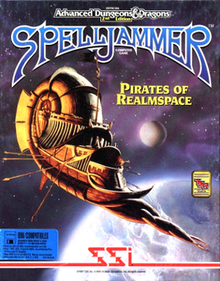Not a bad thing. Cragholdt Bluffs was a high point because it was an adventure that could have come straight out of AD&D. I'm just asking for a little nod to earlier developers who flexed their creativity, as in an entire overland map and dungeons built out of Moander's dormant corpse.
Standing on the shoulders of giants.
The Pillars of Eternity game world is essentially a severe case of dissociative identity disorder. On one hand, it wants to be Dungeons and Dragons, with elves and dragons and liches. On the other hand, it wants to be a profound exploration of existentialism, nihilism, and the nature of souls. It wouldn't be so bad, had they simply decided to focus on one, or the other, but attempting to focus on
both killed it for me.
To use your Cragholdt Bluffs as an example, the dungeon and its associated quests came out of no where and was a jarring interruption to the narrative. Concelhaut, aka not Irenicus, is given a faint motivation of being vaguely interested in your soul, but otherwise he's completely detached from the story, as are his rivals. You'd think that the most powerful wizards in the world would have a strong interest in Thaos and the Leaden Key, but no, they don't give a fuck, and act like they don't even live in the same world. Llengrath, for instance, pretends that her strategy of transferring her knowledge from generation to generation is cool shit, but her developer didn't seem to realize that all Llengrath is doing is what the Watcher and Thaos are already doing and that Llengrath is just doing it in a much more stupid way.
You want to do Dungeons and Dragons? Then do Dungeons and Dragons. Call Concelhaut, say,
Larloch, and Llengrath, say,
Szass Tam. Then your story becomes: Szass Tam is trying to steal the magical secrets of Larloch, and tricks a group of powerful paladins, clerics, etc. to do his bidding; the players get involved as contractors to the group, and are misled into thinking they were trying to rid the realms of an ancient evil, when in fact Larloch's existence is necessary to bring balance to the weave, or shit, and then you can have the standard Dungeons and Dragons alignment conflict, etc.
Or, you know, you can take the opposite path, and actually explore the ideas you've created. So instead of Cragholdt Bluffs, make it the ruins of an ancient Engwithan laboratory, where the Engwithans launched their inquiries into the nature of being. Have it be filled with the soul echoes of the Engwithan researchers, who ventured deep into the void, calling the names of their deities, only to find
nothing. Show us what the Engwithans saw, what might have convinced them of the fact, and have it hint at how they dealt with the aftermath, of the idea of an empty existence. After all, isn't that the whole premise?
Not to mention this current offering, lifted straight from Dungeons and Dragons. You're telling me you couldn't come up with a better, more novel idea that would be consistent with the themes you've raised? Like what about the Wheel, which is referred to directly in the second game's beginning and ending? How about building a dungeon around that, so as to give context to the Eothas dialogue? Or how about an aborted Engwithan god, where the souls sacrificed to create the god failed to converge, and are now stuck in a dark, twisted place and you have to help them move on, either by escaping back to the Wheel, or by joining together to create the actual god? Why is this so difficult?
I don't know, maybe they will actually surprise us and create a thematically consistent and creatively significant adventure, but knowing the precedents, I doubt it.













